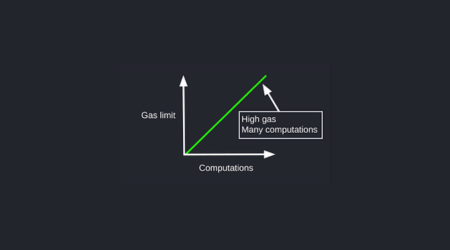Are you tired of waiting for transaction hashes to be generated in your Solidity projects? Imagine being able to predict these hashes with confidence, saving you valuable time and resources.
Well, look no further! In this developer’s guide, we will explore the art of predicting transaction hashes in Solidity. By understanding the factors that affect hash generation and utilizing the right tools and techniques, you can streamline your development process and ensure smooth transactions every time.
Get ready to revolutionize your Solidity projects with this groundbreaking approach.
1. Key Takeaways
- Transaction hashes are unique identifiers for each transaction on the Ethereum blockchain, ensuring integrity and security.
- Factors such as input data, block number, and gas limit can affect transaction hash generation.
- Tools and techniques like unique identifiers and analyzing transaction data can help predict transaction hashes accurately.
- Best practices include setting appropriate timeouts, mitigating hash collisions, and regularly reviewing security measures when dealing with transaction hashes.
2. Understanding Transaction Hashes in Solidity
To understand transaction hashes in Solidity, you need to know that they are unique identifiers for each transaction on the Ethereum blockchain.
Transaction hashes play a crucial role in smart contracts as they ensure the integrity and security of the transactions. They serve as a fingerprint for every transaction, allowing participants to verify the authenticity and validity of the transaction data.
Understanding the importance of transaction hashes in smart contracts is essential, as it helps developers ensure the reliability and security of their applications.
Moving forward, let’s explore the factors that affect transaction hash generation.
3. Factors Affecting Transaction Hash Generation
Factors affecting the generation of transaction hashes can vary depending on certain conditions. When working with transaction hash generation algorithms, it’s important to consider the following factors:
- Input Data: The data provided as input to the transaction can affect the resulting hash. Even a small change in the input data can lead to a completely different hash.
- Block Number: The block number at which the transaction is included can also impact the hash. As the blockchain grows, the block number changes, affecting the transaction hash.
- Gas Limit: The gas limit assigned to a transaction influences the hash generation process. A change in the gas limit can alter the final hash.
Understanding these factors is crucial when predicting transaction hashes in Solidity. By taking them into account, you can accurately anticipate the resulting hash and ensure the integrity of your smart contracts.
Now, let’s delve into the tools and techniques that can assist you in predicting transaction hashes without skipping a beat.
4. Tools and Techniques for Predicting Transaction Hashes
Understanding the tools and techniques that can assist in anticipating transaction hashes is essential for developers. By employing transaction hash generation techniques, you can predict transaction hashes with greater accuracy.
One such method is using unique identifiers or nonces to create deterministic transaction hashes. Additionally, analyzing the data being used in the transaction can help in predicting the resulting hash.
These transaction hash prediction methods can greatly enhance your ability to work with transaction hashes in Solidity.
Now, let’s delve into the best practices for dealing with transaction hashes in Solidity.
5. Best Practices for Dealing With Transaction Hashes in Solidity
When working with transaction hashes in Solidity, it’s important to follow these best practices to ensure smooth handling of your transactions:
- Handling transaction timeouts: Set appropriate timeout values for your transactions to avoid potential delays or failures.
- Mitigating transaction hash collisions: Implement strategies such as using unique identifiers or random numbers to minimize the chances of collision.
In the next section, we will explore real-world use cases that demonstrate the practical applications of predicting transaction hashes in Solidity.
6. Real-world Use Cases for Predicting Transaction Hashes in Solidity
In real-world scenarios, you can apply your knowledge of transaction timeouts and collision mitigation to ensure smooth transaction processing in Solidity. However, it’s important to be aware of the limitations and security implications of predicting transaction hashes in Solidity.
Predicting transaction hashes can be challenging due to the randomness of block mining and the potential for collisions.
This can lead to inaccurate predictions and potential security vulnerabilities. It’s crucial to carefully consider the risks and implement proper security measures when dealing with transaction hashes in Solidity.
| Limitations of predicting transaction hashes in Solidity | Security implications of predicting transaction hashes in Solidity | Best Practices for Dealing With Transaction Hashes in Solidity |
|---|---|---|
| Randomness of block mining can make predictions difficult | Inaccurate predictions can lead to security vulnerabilities | Implement proper security measures when dealing with transaction hashes |
| Potential for collisions can further complicate predictions | Predicted hashes may not match the actual transaction | Consider the risks and implications of predicting transaction hashes |
| Risk of relying solely on predicted hashes for critical operations | Security of the system can be compromised | Use transaction timeouts and collision mitigation techniques |
| Lack of control over block mining process | Transactions may get stuck or delayed | Regularly review and update security measures |
| Need for additional safeguards to ensure accuracy | Potential for unauthorized access or manipulation | Continuously monitor for any suspicious activities or anomalies |




